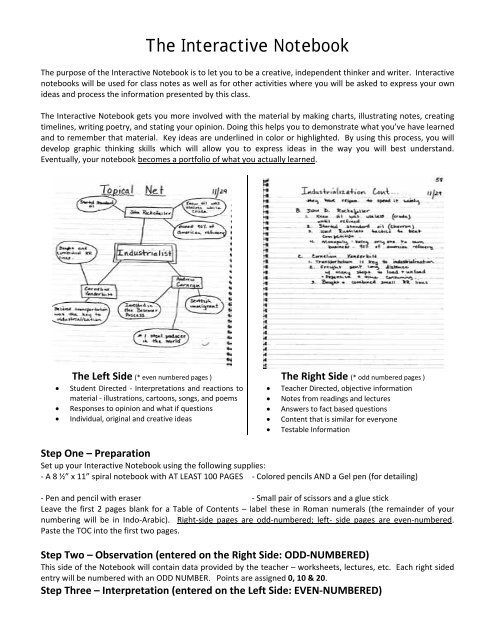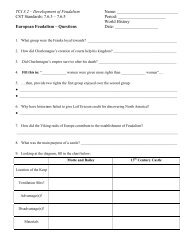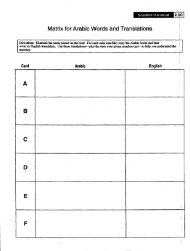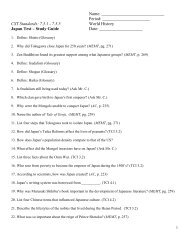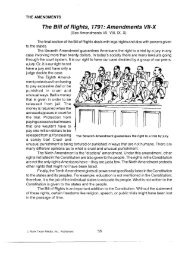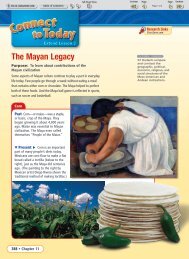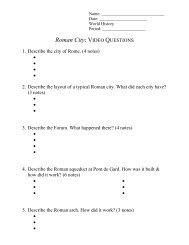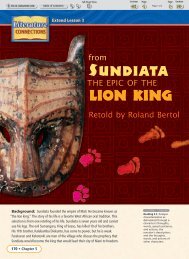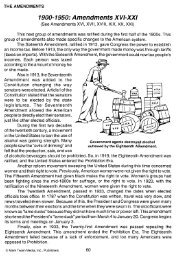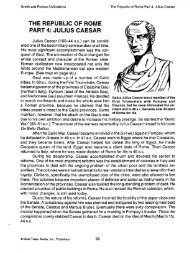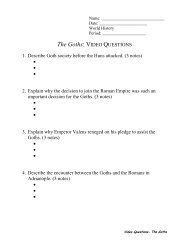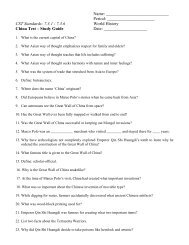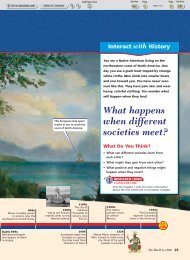The Interactive Notebook - TheMattHatters
The Interactive Notebook - TheMattHatters
The Interactive Notebook - TheMattHatters
You also want an ePaper? Increase the reach of your titles
YUMPU automatically turns print PDFs into web optimized ePapers that Google loves.
<strong>The</strong> <strong>Interactive</strong> <strong>Notebook</strong><strong>The</strong> purpose of the <strong>Interactive</strong> <strong>Notebook</strong> is to let you to be a creative, independent thinker and writer. <strong>Interactive</strong>notebooks will be used for class notes as well as for other activities where you will be asked to express your ownideas and process the information presented by this class.<strong>The</strong> <strong>Interactive</strong> <strong>Notebook</strong> gets you more involved with the material by making charts, illustrating notes, creatingtimelines, writing poetry, and stating your opinion. Doing this helps you to demonstrate what you’ve have learnedand to remember that material. Key ideas are underlined in color or highlighted. By using this process, you willdevelop graphic thinking skills which will allow you to express ideas in the way you will best understand.Eventually, your notebook becomes a portfolio of what you actually learned.<strong>The</strong> Left Side (* even numbered pages )• Student Directed ‐ Interpretations and reactions tomaterial ‐ illustrations, cartoons, songs, and poems• Responses to opinion and what if questions• Individual, original and creative ideas<strong>The</strong> Right Side (* odd numbered pages )• Teacher Directed, objective information• Notes from readings and lectures• Answers to fact based questions• Content that is similar for everyone• Testable InformationStep One – PreparationSet up your <strong>Interactive</strong> <strong>Notebook</strong> using the following supplies:‐ A 8 ½” x 11” spiral notebook with AT LEAST 100 PAGES ‐ Colored pencils AND a Gel pen (for detailing)‐ Pen and pencil with eraser ‐ Small pair of scissors and a glue stickLeave the first 2 pages blank for a Table of Contents – label these in Roman numerals (the remainder of yournumbering will be in Indo‐Arabic). Right‐side pages are odd‐numbered; left‐ side pages are even‐numbered.Paste the TOC into the first two pages.Step Two – Observation (entered on the Right Side: ODD‐NUMBERED)This side of the <strong>Notebook</strong> will contain data provided by the teacher – worksheets, lectures, etc. Each right sidedentry will be numbered with an ODD NUMBER. Points are assigned 0, 10 & 20.Step Three – Interpretation (entered on the Left Side: EVEN‐NUMBERED)
You will convert the right‐side data into a visual representation. Suggestions include:• Brainstorming• Riddles• Venn Diagrams• Warm‐ups• Your QUESTIONS• Dialogues• Reflective homework• Pictographs• Sketcheswriting assignments• Cartoons/Doodles• Flow Chart/Timeline• Discovery headlines• Poetry & Songs• Biography posters• Metaphors/Analogies• Mind Mapping• Concept Map<strong>The</strong>se assignments will be provided to you by the teacher – Right Side activities will be thoroughly explained soyou understand what is expected. Again, each left side entry will be numbered with an EVEN NUMBER. Points asassigned 0, 20, 30, 40, with extra credit awarded only when a page reaches the 40 point total.Here is how I will grade each even‐numbered page of your notebook:‐ Half Credit: assignment is complete and written neatly – no color or extra effort is present‐ Full Credit: assignment is complete and typed OR colored‐ Extra Credit: assignment is complete, typed, AND coloredEarning an ‘A’Your <strong>Interactive</strong> Student <strong>Notebook</strong> must come to class every day, and it will be graded at the end of every unit,and/or periodically. At times, I will spot check your notebooks and give you instant feedback. Other times, I willgrade your notebooks on thoroughness, quality and accuracy of work, organization, and visual appeal. Everyassignment should be complete and neat. Also, your artistic or creative touch should be visible throughout thenotebook. Use color, pictures, and diagrams in order to highlight what you have learned.A student who expects to earn an 'A‐' or higher grade on the notebook will be one who has taken the time toconsistently include extra work. Whatever you draw or paste into the notebook should relate to the discussions,readings, or activities we have completed for the class. Activities might sometimes appear on odd‐numberedpages – don’t worry! Sometimes our units will require us to make this adjustment. As long as your TOC showsthat assignment for that page, you will not be marked down.Once you begin to feel comfortable with the interactive notebook system, you are ready to explore ideas of yourown, to raise questions of interest to you, and to make connections between "real life" and what you are learning.Remember that this is a great chance to use your creativity, and change a boring binder into a dynamic work ofeducational art!


